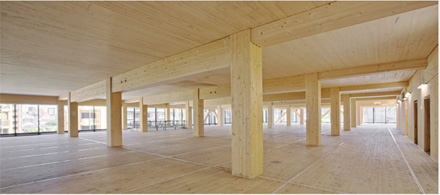
A new report by the World Green Building Council (WGBC) has highlighted the huge potential of timber product building solutions to reduce emissions in Australia’s built environment. Source: Timberbiz
The report, Bringing Embodied Carbon Upfront, says renewable timber products will play a key role in meeting ambitious goals of reducing carbon emissions in the built environment by 40% in 2030 and achieving carbon neutrality by 2050, as buildings currently account for 39% of global carbon emissions.
Australian Forest Products Association (AFPA) Chief Executive Officer Mr Ross Hampton said Australia’s renewable forestry industry produces a unique building material because it absorbs enormous amounts of carbon from the atmosphere in working forests and then stores the carbon in timber products.
“Timber has always been a great building material, but advances in technology, including the development of Cross Laminated Timber (CLT), light weight timber framing and other timber building solutions, accompanied by recent building code updates have opened many more doors for renewable timber to be used more widely in construction,” Mr Hampton said.
“We commend WGBC for recognising the importance of ’embodied energy’ – the carbon emissions associated with manufacturing and construction processes in the lifecycle of a building material.
“Timber has very little embodied energy in comparison to other building materials making it a more sustainable, renewable choice in a carbon-constrained future.”
Mr Hampton said while innovations in timber construction are increasing the uptake of modern timber building solutions in Australia and globally, there is more governments can do to harness the benefits of using renewable timber in the built environment.
“For example, there is currently no specific methodology to allow timber construction to bid for carbon credits through the Federal Government’s Climate Solutions Fund. Substituting one cubic metre of concrete or brick for a cubic metre of timber eliminates approximately one tonne of carbon dioxide from being emitted into the atmosphere.”
AFPA has calculated that even a very modest increase in timber product construction would store 11 million tonnes of additional greenhouse gases over the coming decade.





